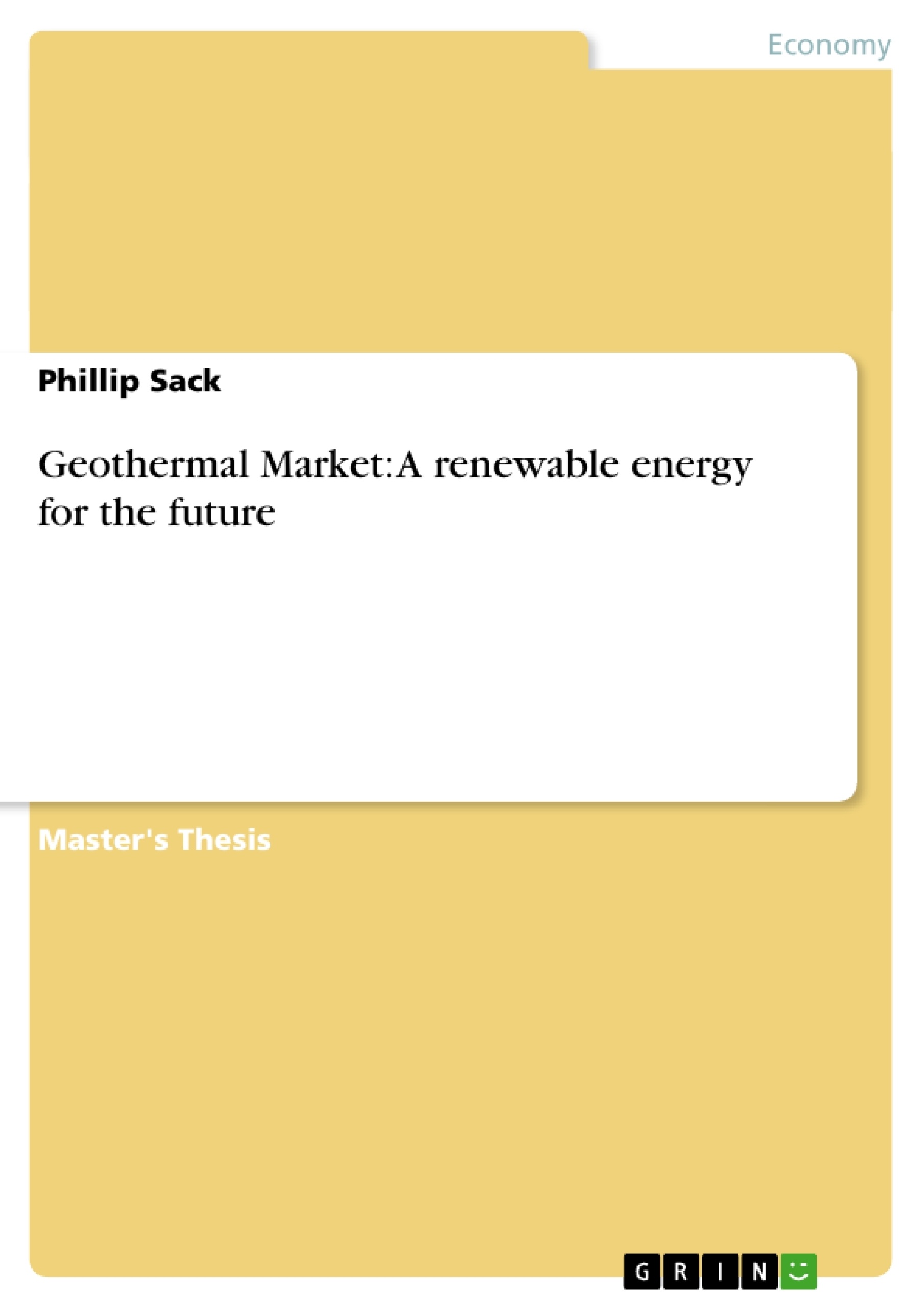The purpose of this project is to provide Enel with an outlook and a possible development of the geothermal sector worldwide.
We analyzed the current geothermal market, its main players, the countries in which they operate as well as the most promising areas with respect to availability and accessibility.
Further, we analyzed technological trends and pursued a risk assessment of the factors that mostly affect the exploration and development of any geothermal field. Based on the above analysis, we propose our recommendation to Enel to further strengthen its geothermal activities and global positioning.
After getting a broad overview from the main geothermal organizations, we interviewed experts with technical and business background as well as geothermal operators, and visited production power plants in order to deepen our knowledge. The analysis of the information we gathered enabled us to develop the following conclusion.
Geothermal is a clean, reliable and sustainable renewable energy, which has proved to be a viable alternative to oil, coal and gas. Its capacity has grown consistently over the last 20 years due to the rising attractiveness to energy companies. Among the reasons for this growth are the reduced exploration and drilling costs, the incentives that some governments offer and the increased corporate awareness of environmental problems (i.e., the Kyoto Protocol restrictions and the Clean Development Mechanism). A good example is Iceland, where 90% of the households already profit from energy offered at a competitive price and generated by geothermal resources.
Inhaltsverzeichnis (Table of Contents)
- Executive Summary
- ENEL S.p.A.
- Company Background
- Company Chart
- Services and Other Activities
- Geothermal Activities
- Outlook
- Definition of Geothermal Energy
- Geothermal Industry
- Geothermal Development
- Current Situation
- Growing Demand
- Technology
- Technology and resource type
- Technology overview
- Electric power generation
- Economics
- Production and Operating & Maintenance Costs
- Pricing
- Substitutes / Renewable Energy
- Introduction
- Biomass
- Hydro
- Solar
- Wind
- Real Option Risk Analysis
- Definition of Real Option
- Real Option and Investment in Geothermal Energy
- Country Analysis
- Competitors Analysis
- Geothermal Exploration
- Distribution
- Recommendation
Zielsetzung und Themenschwerpunkte (Objectives and Key Themes)
This project aims to provide Enel with an outlook and possible development of the geothermal sector worldwide. The analysis includes an overview of the current geothermal market, its key players, and the most promising areas for development based on resource availability and accessibility.
- Assessment of the current geothermal market and its key players
- Exploration of the most promising areas for geothermal development
- Analysis of technological trends in the geothermal sector
- Risk assessment of factors influencing geothermal exploration and development
- Recommendations for strengthening Enel's geothermal activities and global positioning
Zusammenfassung der Kapitel (Chapter Summaries)
- Executive Summary: This chapter provides an overview of the project's purpose, methodology, and key findings, highlighting the potential of geothermal energy as a clean and sustainable alternative to fossil fuels. It emphasizes the growth of the geothermal market, driven by factors such as reduced exploration costs, government incentives, and increasing environmental awareness.
- ENEL S.p.A.: This chapter presents information about Enel, including its background, organizational structure, services, and current geothermal activities. It provides insights into Enel's experience and expertise in the energy sector, setting the context for the project's recommendations.
- Definition of Geothermal Energy: This chapter defines geothermal energy and explains its potential as a renewable energy source. It explores the different types of geothermal resources and their characteristics, providing a fundamental understanding of the technology behind geothermal power generation.
- Geothermal Industry: This chapter delves into the current state of the geothermal industry, highlighting its development, market trends, and the growing demand for geothermal energy. It examines key factors influencing the industry's growth and explores the challenges and opportunities facing geothermal development.
- Technology: This chapter examines the different technologies involved in geothermal power generation, focusing on the relationship between technology and resource type. It provides a detailed overview of various technologies, including dry steam, flash steam, binary cycle, and hot dry rock systems, exploring their advantages, disadvantages, and suitability for different resource types.
- Economics: This chapter analyzes the economics of geothermal power generation, focusing on production costs, operating and maintenance costs, and pricing. It compares the cost competitiveness of geothermal energy with other renewable and non-renewable energy sources, providing insights into the financial feasibility of geothermal projects.
- Substitutes / Renewable Energy: This chapter explores alternative energy sources, including biomass, hydro, solar, and wind power. It compares the characteristics, advantages, and limitations of these renewable energy sources with geothermal energy, providing a broader context for understanding the potential of geothermal energy within the renewable energy landscape.
- Real Option Risk Analysis: This chapter examines the concept of real options and applies it to the context of geothermal energy investment. It analyzes the factors influencing the profitability of geothermal projects, including country-specific risks, competition, and the availability of geothermal resources. It also explores the use of real option analysis as a tool for decision-making in the development of geothermal projects.
Schlüsselwörter (Keywords)
The key focus topics of this project are geothermal energy, renewable energy, market analysis, technological trends, risk assessment, investment strategies, and country analysis. This includes exploring geothermal resource availability, exploration and development costs, environmental impacts, and the regulatory frameworks governing the geothermal industry.
- Quote paper
- Phillip Sack (Author), 2005, Geothermal Market: A renewable energy for the future, Munich, GRIN Verlag, https://www.grin.com/document/49706



